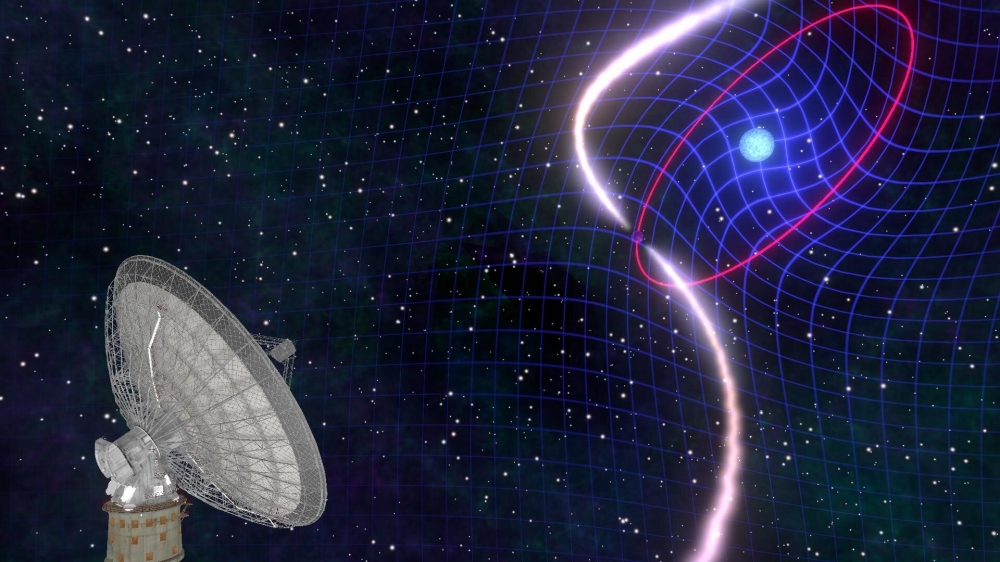Astronomers witness the dragging of space-time in stellar cosmic dance

Artist's depiction of 'frame-dragging': two spinning stars twisting space and time. Credit: Mark Myers, OzGrav ARC Centre of Excellence.
An international team of astrophysicists led by Australian Professor Matthew Bailes, from the ARC Centre of Excellence of Gravitational Wave Discovery (OzGrav), has shown exciting new evidence for 'frame-dragging'—how the spinning of a celestial body twists space and time—after tracking the orbit of an exotic stellar pair for almost two decades. The data, which is further evidence for Einstein's theory of General Relativity, is published today the journal Science.
More than a century ago, Albert Einstein published his iconic theory of General Relativity—that the force of gravity arises from the curvature of space and time and that objects, such as the Sun and the Earth, change this geometry. Advances in instrumentation have led to a flood of recent (Nobel prize-winning) science from phenomena further afield linked to General Relativity. The discovery of gravitational waves was announced in 2016; the first image of a black hole shadow and stars orbiting the supermassive black hole at the centre of our own galaxy was published just last year.
See ful text